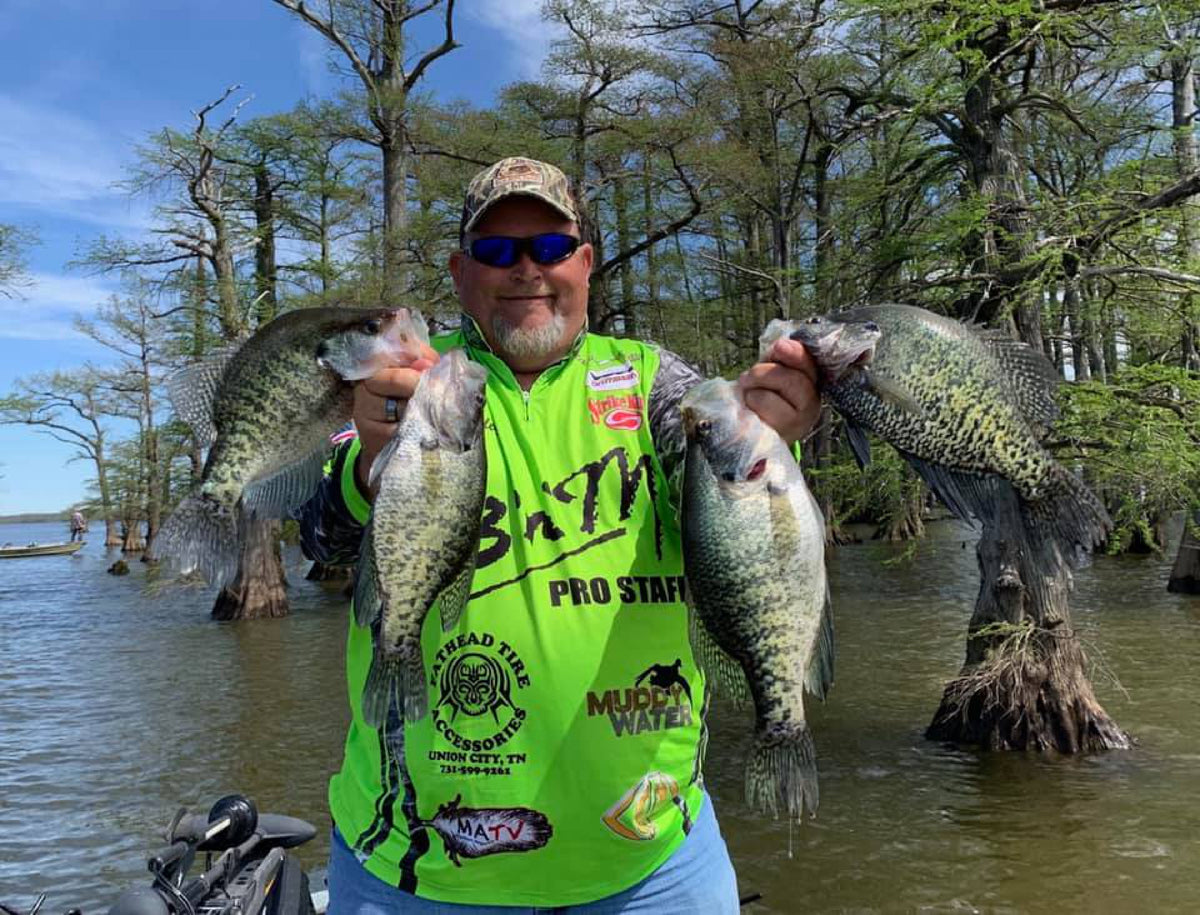
Joel Harris On Post Spawn Crappie Fishing
Joel Harris On Post Spawn Crappie Fishing
By Phillip Gentry
Once the spawning season for crappie has ended, many anglers believe crappie go into a “lull” which makes them harder to find and catch. B’n’M pro staffer Joel Harris from Belmont, MS guides on Lake Pickwick, situated along the Tennessee/Alabama/Mississippi border and explained that post spawn crappie fishing anglers don’t have to struggle if they understand a few things about springtime migrations.
“I don’t see any lull in post spawn crappie fishing,” said Harris. “Much of that has to do with understanding the movement patterns of the fish. It’s also helpful if you know the lake you’re fishing.”
Harris said Pickwick crappie are well known for spawning on the acres of stump flats the lake is famous for. Following the spawn, which occurs in depths of 18 – 20 feet, crappie will move to brush piles where they will transition into their summer pattern.

Following the spawn, Harris has found that crappie quickly transition to nearby structure to recover.
“On a lot of clear water lakes around the country, crappie are going to be oriented to brush piles all summer long,” said Harris. “On cloudy days they may range 10 – 15 feet out on either side of the cover and on sunny days, they may be buried down in it, but they’ll always be somewhere close.”
When Harris says brush piles, he’s referring to stands of sunken trees or treetops and limbs that he has strategically planted in areas that will be suitable to crappie. As a pro-staff member for Mossback Fish Habitat, more and more of his planted locations are with Mossback products that will never need to be replenished.
He said on Pickwick, there is a fairly quick transition from stump flats to brush piles. In other reservoirs, he would equate this to fish moving from spawning grounds to summering grounds. He can transition with the fish, having established fish attracting structure plus past experience.
“Not all fish spawn at the same time, so as the spawn tapers off, the early spawners are already on the summer structure,” he said. “I side pull for spawning fish, but when it comes to summertime fishing on the structure, I use an entirely different tactic.”

Placing baits at precise locations and depths according to how crappie are oriented to brush and structure below will increase catch rates.
First, he moves directly to the structure areas where he has planted structure. He positions his boat right on top of the structure, which is typically in 15 – 20-foot depths and offers a straight vertical presentation of crappie jigs. He will instruct his clients to lay the rods flat on the side deck of the boat, not in a rod holder.
“We’re just watching that rod tip for any movement,” he said. “If it moves at all, you need to set the hook.”
Fishing vertically in clear water necessitates some stealth in fishing line. Harris’ pick is 4-pound Gamma fluorocarbon. It’s matched with a tiny 1/32 oz Trout Magnet jig head and a Crappie Magnet body. To hold the bait deep, he crimps a #5 split shot about 18 inches above the bait.
“The boat is not moving,” said Harris. “I hold it in place using the Spot Lock feature on my trolling motor. The baits are just down there hanging.”
Harris’ favorite colors are a gold-colored bait called Mealworm. The clear body with gold flake inside seems to elicit the most strikes.
“One thing I can say about the difference between spawn and post spawn is the mood of the fish,” said Harris. “During the spawn, I’m moving the boat at speeds over a mile per hour and they will hit it hard. During the post-spawn, they generally don’t want the bait moving at all. It’s a much more subtle approach.”

Crappie don’t all spawn at the same time and accordingly, may not migrate to post spawn locations at the same time.
Harris said he targets brushpiles and other structure where the bottom may be as deep as 25 feet but generally, he wants his baits to be about 15 feet or level with the top of the structure.
“There are days when crappie are deeper or dug into the structure, but they’re usually somewhere near the top of the brush,” said Harris. “If you put those baits at their level, right there in their face and just hold it there, sooner or later they’ll warm up and take the bait.”
One final note, although he’s targeting structure in the mid depths, Harris never overlooks good structure in shallower water. On occasion, it has paid off as well.
“Fish don’t all behave the same way,” he said. “There are times and places where I’ve found good fish on shallow water brush after the spawn, so it never hurts to look there too.”
**********
To book a guide trip with Joel Harris Fishing on Lake Pickwick or Bay Springs Reservoir, contact Joel Harris at 662-424-2551.
***********
Wherever fishing takes you, B’n’M has been there. To view all of our fish catching products, Visit our website at bnmpoles.com
Also in Weekly Tips and Techniques

Winter Crappie Fishing Strategies with Lance Hughey
B’n’M pro-staffer Lance Hughey said it never gets too cold to catch crappie.

North Texas Fall Crappie Fishing with Brian Carter
Texas crappie pro-staffer Brian Carter loves to pitch jigs at standing timber during the fall of the year.

Summer Crappie Fishing with Billy Blakley
B’n’M pro-staffer Billy Blakley claims the copious amount of rainfall so far this year has created some great summer crappie fishing on Reelfoot Lake.
